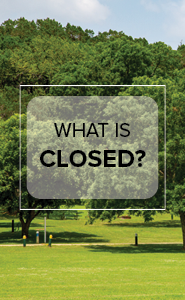Community garden design is driven by the unique characteristics of each site but every garden should include these details. The application requires a description and a sketch of your community garden design.
1. Consider the following elements:
- Layout
-
Design your garden to ensure that plots receive ample sunlight. Plan for at least 10 plots. Raised beds should be 4' x 6' to 4’x 8’ in size. Taller garden beds are more accessible for seniors and community members with limited mobility.
Garden paths should be wide enough (at least 4 feet) to accommodate mobility devices such as wheelchairs and walkers.
Many gardens use the borders of the community garden to plant perennial herbs, native plants, and fruit trees.
- Water
-
City-sponsored community gardens must use sustainable urban agriculture practices, including water conservation. Some measures you can take for water conservation include:
Automatic sprinklers are not allowed. Hose watering is an option but discouraged since it is very inefficient in the Central Texas climate. We recommend a professionally installed underground system of PVC pipes with hose bibs and a drip line irrigation system. Timers can be used for drip irrigation.
- Waste
-
Your garden must have a shared composting area for the community gardeners, with space for compost piles at different stages, and a location for mulch and soil to be staged. There are various different methods for composting that you can adopt. Any non-compostable waste in your garden, such as pet waste, must be carried out.
- Community involvement
-
Post a sign with the garden's name, endorsers, and the garden's primary email address for more information. Please use an email that is not a personal email, instead select an Evergreen email that will remain active through leadership changes. Gardens exist to give back to the community, consider making at least one plot free of charge, as an educational or social service to those in need.
Food in communal garden beds may be donated to emergency food providers or placed outside the gate to invite people to harvest food as needed. Examples can be found at the Deep Eddy Community Garden and at the Cherry Creek Community Garden.
- Structures
-
Erect a fence around the perimeter to define the boundaries of your garden and discourage vandalism. We recommend a 4-6' tall hog wire fence.
Store tools, supplies, and materials in a locked tool shed or other structure.
Create a gathering space like a bench or picnic table where gardeners can sit, relax, or offer workshops. This could alternately serve as space for a shared plant nursery or potting table.
Put up two kiosks or bulletin boards, one internal where you communicate rules, meeting notices, and other important information to gardeners, and one external where you communicate open hours, compost drop-off times, and volunteer opportunities to neighbors.
2. Write a description of your community garden. It should include:
- Why was this site selected?
- How will the garden serve the community's needs?
- When will the community garden be open to the public? Community gardens are required to be open to the public at least once per month.
- Will the garden host demonstrations or workshops that will be open to the public?
- How will you implement sustainable urban agriculture practices?
- General plans for layout, irrigation, and waste/composting.
There is no required length for this document.
3. Create a sketch of your community garden design.
Your community garden sketch needs to be drawn to scale. Using a landscape architect is recommended but not required. It will help in the site plan exception application. To meet site plan requirements your sketch should be at a 10 to 30 engineering scale or a 1/8” to 1/2” architectural scale. It should indicate, but is not limited to:
- Existing trees and landscaping
- Buildings
- Parking areas and driveways
- Roadways/streets
- Accessible parking
- Detention ponds
- All areas of impervious cover (existing and proposed)
- Erosion controls (i.e.: silt fencing, tree protection)
- Limits and type of construction
- Location of construction
- On-site sewage (septic) system
Some landscape architects offer reduced rates or are willing to do pro bono work for community gardens.
View a few sample garden designs.
For more details on planning a garden see Texas AgriLife Extension Service - How to Plan a Garden.



